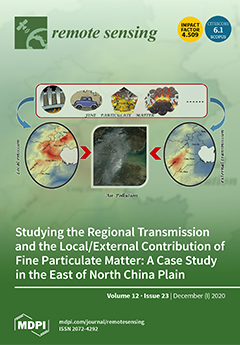In recent years, with the development of compressed sensing theory, sparse representation methods have been concerned by many researchers. Sparse representation can approximate the original image information with less space storage. Sparse representation has been investigated for hyperspectral imagery (HSI) detection, where approximation
[...] Read more.
In recent years, with the development of compressed sensing theory, sparse representation methods have been concerned by many researchers. Sparse representation can approximate the original image information with less space storage. Sparse representation has been investigated for hyperspectral imagery (HSI) detection, where approximation of testing pixel can be obtained by solving
-norm minimization. However,
-norm minimization does not always yield a sufficiently sparse solution when a dictionary is not large enough or atoms present a certain level of coherence. Comparatively, non-convex minimization problems, such as the
penalties, need much weaker incoherence constraint conditions and may achieve more accurate approximation. Hence, we propose a novel detection algorithm utilizing sparse representation with
-norm and propose adaptive iterated shrinkage thresholding method (AISTM) for
-norm non-convex sparse coding. Target detection is implemented by representation of the all pixels employing homogeneous target dictionary (HTD), and the output is generated according to the representation residual. Experimental results for four real hyperspectral datasets show that the detection performance of the proposed method is improved by about
to
than methods mentioned in the paper, such as matched filter (MF), sparse and low-rank matrix decomposition (SLMD), adaptive cosine estimation (ACE), constrained energy minimization (CEM), one-class support vector machine (OC-SVM), the original sparse representation detector with
-norm, and combined sparse and collaborative representation (CSCR).
Full article





